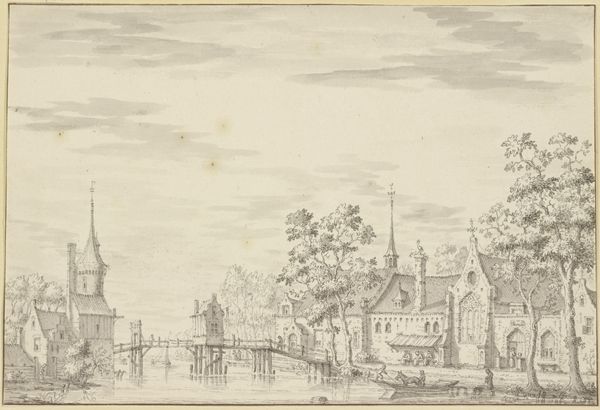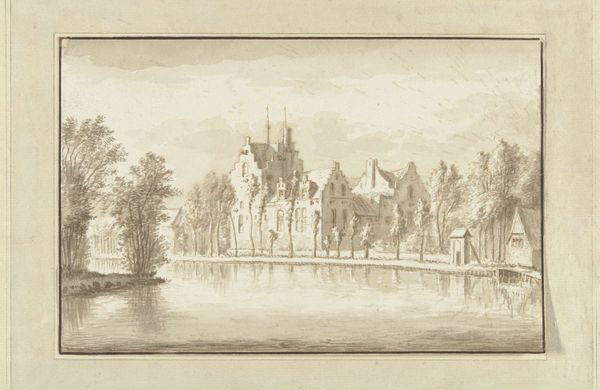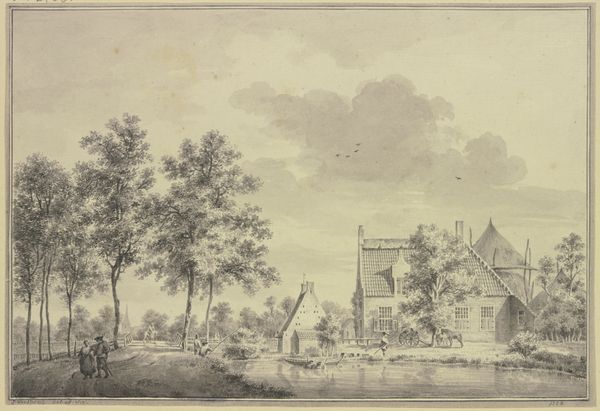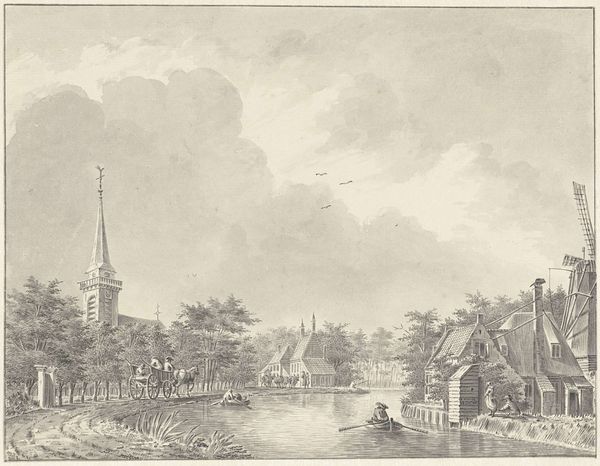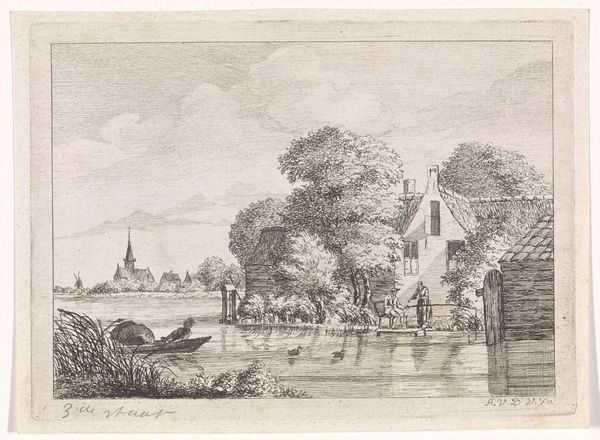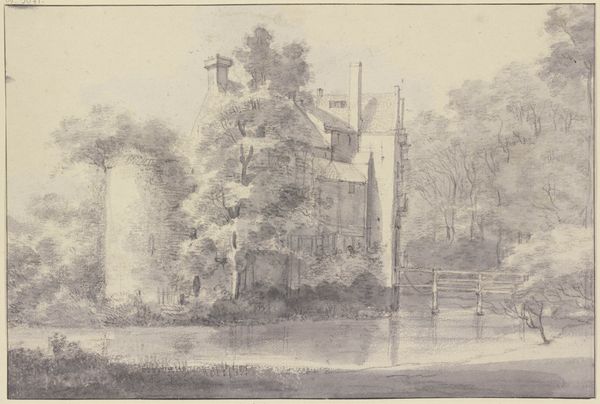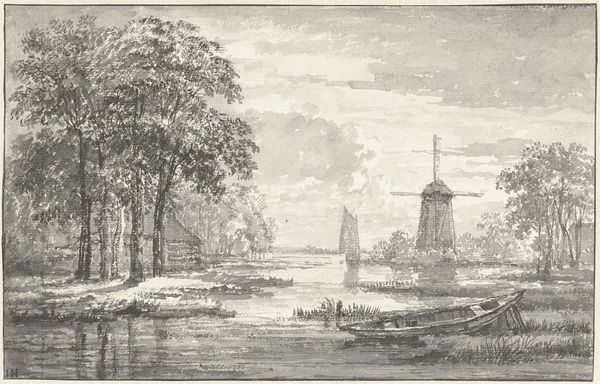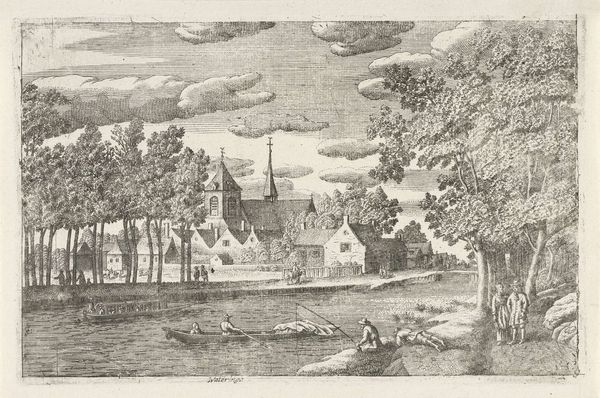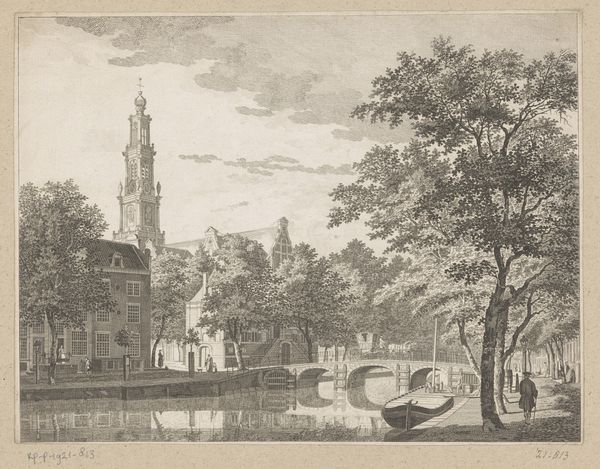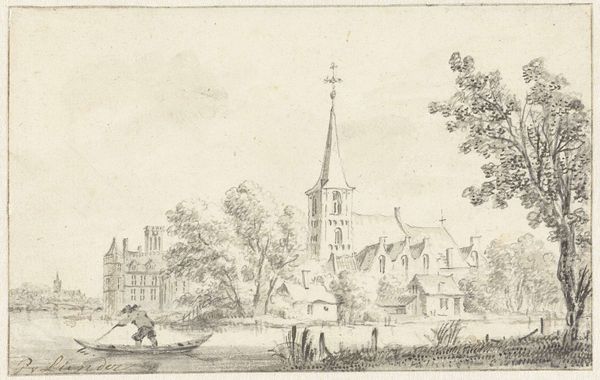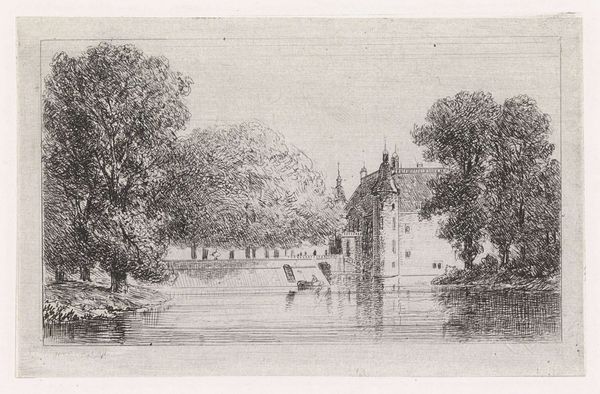
drawing, pencil
#
drawing
#
baroque
#
pencil sketch
#
landscape
#
pencil
#
cityscape
Dimensions: height 149 mm, width 218 mm
Copyright: Rijks Museum: Open Domain
Curator: Here we have Hendrik de Winter's 1745 drawing, "De kerk te Oudewater," rendered meticulously in pencil. It's currently held at the Rijksmuseum. Editor: There's an incredible delicacy to it. The pervasive muted grey lends a quiet solemnity, almost hushed reverence. I wonder if that’s intentional. Curator: The church, centrally positioned, looms large, serving as both a spiritual and physical anchor. Religious architecture has often been used to inspire awe, subtly enforcing cultural cohesion and perhaps even reinforcing social structures. Editor: Absolutely. Note how the verticality of the church is subtly mirrored by the slender trees, visually linking the natural and the built environment. It's a cohesive, if somewhat rigid, compositional choice. Curator: Consider also the river, snaking its way into the foreground, guiding our gaze towards the monumental architecture. Water is often interpreted as a symbol of transition, movement, a conduit between the known and unknown. Here it could symbolize the soul's journey. Editor: The texture is fantastic too. See how de Winter plays with density in the pencil strokes, creating varied surfaces that allow for some sense of depth, all be it very shallow. The overall flatness adds a somewhat two dimensional feeling, like stage design for the church and adjacent buildings. Curator: Precisely, he emphasizes the plane. Though on closer inspection we can see the tiny human figures on the left, almost dwarfed by the sheer mass of the church. A gentle reminder of individual fragility against the backdrop of societal permanence and faith. Editor: It really captures a still point in time, like capturing the quality of light just before dusk when everything has a quiet stillness. What about the boats resting in the foreground? Curator: Their stillness and location further emphasizes that peace and reflection. Boats often serve as symbols of passage, a personal vessel. But grounded like this they suggest contemplative reflection. Editor: I can definitely agree, the restraint on colour adds a weight and timelessness. There’s no drama just quiet authority. Curator: De Winter’s city portrait then captures a time of baroque order that, I suspect, imbued life with deeper meaning. Editor: Indeed, "De kerk te Oudewater" prompts us to consider how built environments shape collective identity, and how the formal components serve this expression.
Comments
No comments
Be the first to comment and join the conversation on the ultimate creative platform.
